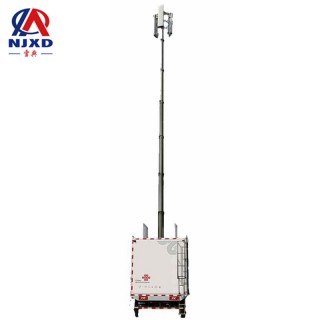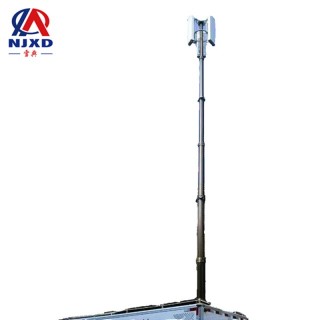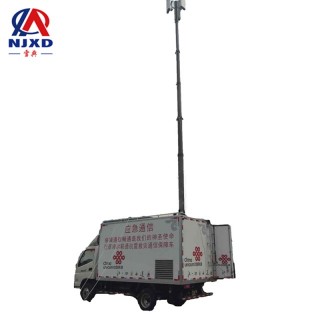NEWS
Emergency lifting mobile communication standard
Time:2020-12-16 View:

The typical representative of mobile communication system is the AMPS system of the United States and later improved system TACS, as well as NMT and NTT, etc. AMPS (Advanced Mobile Phone System) uses the 800MHz band of analog cellular transmission and is widely used in North America, South America and some Pacific Rim countries.

Development history
The first generation was an analog cellular mobile communication network from the mid 1970 s to the mid 1980 s. In 1978, Bell Laboratory successfully developed Advanced Mobile Phone System (AMPS) and built cellular mobile communication system. Other industrialized countries have also developed cellular mobile communication networks one after another. Compared with the previous mobile communication system, the most important breakthrough at this stage was the concept of cellular-network put forward by Bell Laboratory in 1970 s. Cellular-network, namely the Community system, greatly improves the system capacity due to the frequency reuse.
TACS (Total Access Communication System) uses 900MHz frequency band and is divided into ETACS (Europe) and NTACS (Japan). This standard is widely used in Britain, Japan and some Asian countries.
The main feature of the first generation of mobile communication system is that it adopts frequency division multiplexing, and the voice signal is analog modulation, with an analog user channel every 30kHz/25kHz. The first generation of systems has achieved great commercial success, but its disadvantages are gradually revealed:
(1) low spectrum utilization
(2) limited business types
(3) no high-speed data service
(4) poor confidentiality, easy to be stolen and stolen
(5) high equipment cost
(6) large volume and weight.
In order to solve these fundamental technical defects in analog systems, digital mobile communication technology came into being and developed. This IS the second generation mobile communication system represented by GSM and IS-95, the time began in the mid-1980s. Europe first launched the pan-European digital mobile communication network (GSM) system. Subsequently, the United States and Japan also formulated their own digital mobile communication systems. Compared with analog mobile communication, digital mobile network improves spectrum utilization, supports a variety of business services, and is compatible with ISDN and so on. The second generation mobile communication system aims at transmitting voice and low-speed data services, so it is also called narrowband digital communication system. Typical representatives of the second generation digital cellular mobile communication system are DAMPS system in the United States, IS-95 and GSM system in Europe.
(1) GSM (Global System for Mobile Communication) originated in Europe. It is designed as the DMA standard of global digital cellular communication. It supports a data rate of 64kbps and can be interconnected with ISDN. GSM uses the 900MHz band and uses the 1800MHz band, which is called dcs1800. GSM adopts FDD duplex mode and TDMA multiple access mode. Each carrier frequency supports 8 channels and the signal bandwidth is 200kHz. The GSM standard system is relatively perfect and the technology is relatively mature. The disadvantage is that compared with the analog system, the capacity increases Little, which is only about twice that of the analog system and cannot be compatible with the analog system.
(2) DAMPS (advanced digital mobile phone system) IS-54 (North American digital cellular), using 800MHz band, it is an earlier one of the two North American digital cellular standards, specifying the use of TDMA multiple access.
(3) IS-95 IS another digital cellular standard in North America. It uses 800MHz or 1900MHz frequency band and specifies CDMA multiple access. It has become a PCS (personal communication system) in the United States. The first technology of the network.
Since the second generation of mobile communication aims at transmitting voice and low-speed data services, since 1996, in order to solve the problem of medium-speed data transmission, 2.5 generation mobile communication systems, such as GPRS and IS-95B, have emerged. The main services provided by mobile communication are still voice service and low-rate data service. Due to the development of network, the development momentum of data and multimedia communication is very fast. Therefore, the goal of the third generation mobile communication is mobile broadband multimedia communication. From the perspective of development prospect, due to its own technical advantages, CDMA technology has become the core technology of the third generation mobile communication. In order to achieve the above goals, the following requirements are put forward for 3G wireless Transmission Technology (RTT:Radio Transmission Technology):
(1) high-speed transmission to support multimedia services. Indoor environment at least 2Mbps; Indoor and outdoor walking environment at least 384kbps; Outdoor vehicle movement at least 144kbps; Satellite mobile environment at least 9. 6kbps.
(2) transmission rate can be allocated as needed.
(3) uplink and downlink links can adapt to asymmetric requirements.
The third generation Mobile communication System was first proposed by the International Telecommunication Union (ITU) in 1985, and was then called the Future Public Land Mobile communication System (FPLMTS), it was renamed IMT-2000(International Mobile Telecommunications-2000) in 1996, meaning that the system works in the 2000MHz frequency band with a maximum service rate of 2000Kbps. It is expected to be commercially available around 2000. The main systems are WCDMA,cdma2000 and TD-SCDMA. On November 5, 1999, the 18th Meeting of ITU ITU-R TG8/1 passed the proposal of "IMT-2000 wireless interface Technical Specification, among them, the TD-SCDMA technology proposed by our country is written in the IMT-2000 CDMA TDD part recommended by the third generation wireless interface specification.

3G mobile communication standard
Including cdma2000, WCDMA, and TD-SCDMA
■ cdma2000
· Direct sequence spread spectrum code division multiple access, Frequency Division Duplex FDD mode;
· Version EV-DO Rel A can provide up to 3.1Mbps downlink data within A bandwidth of 1.25MHz
Transmission rate;
■ WCDMA
· Direct sequence spread spectrum code division multiple access, Frequency Division Duplex FDD mode;
· Based on R99/R4, it is extended to R5 and R6, providing up to 21Mbps of user data within 5MHz bandwidth.
Transmission rate;
■ TD-SCDMA
· Time Division Duplex TDD is combined with FDMA/TDMA/CDMA;
· Based on R4, it can provide a maximum of 384kbps users within a bandwidth of 1.6MHz.
The transmission rate.

CATEGORY
NEWS
- Frequency band of lifting antenna global mobile communication system
- Emergency lifting mobile communication standard
- Development History of data communication emergency communication ups and downs
- Classification and transmission means of data communication emergency communication base station
- Communication system structure of lifting emergency data communication